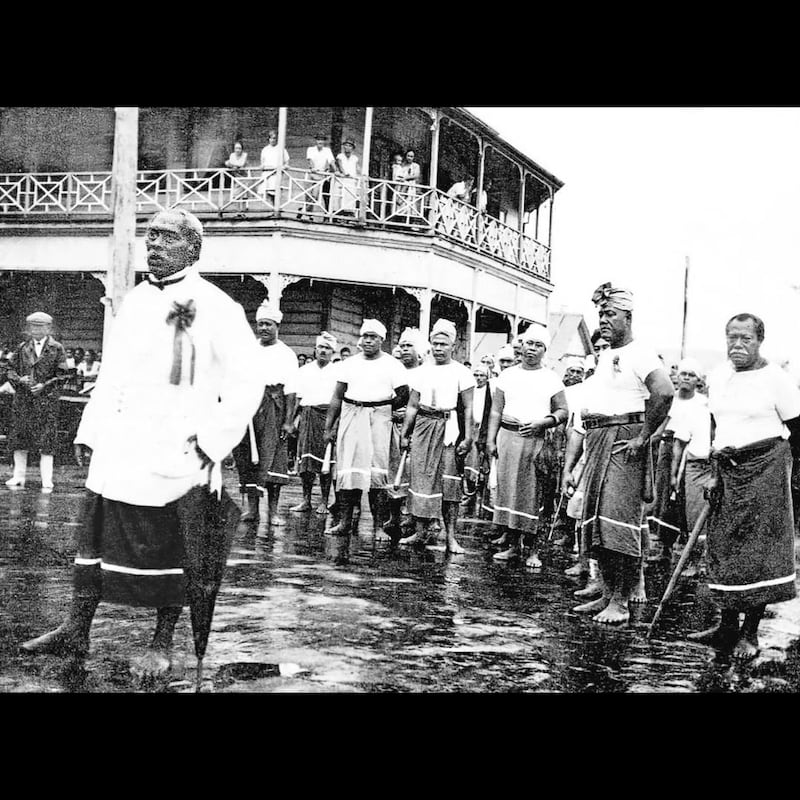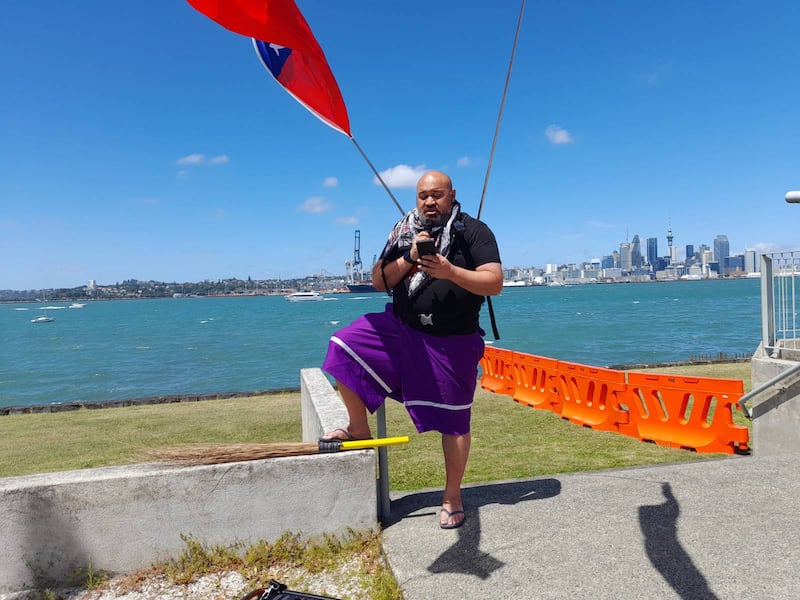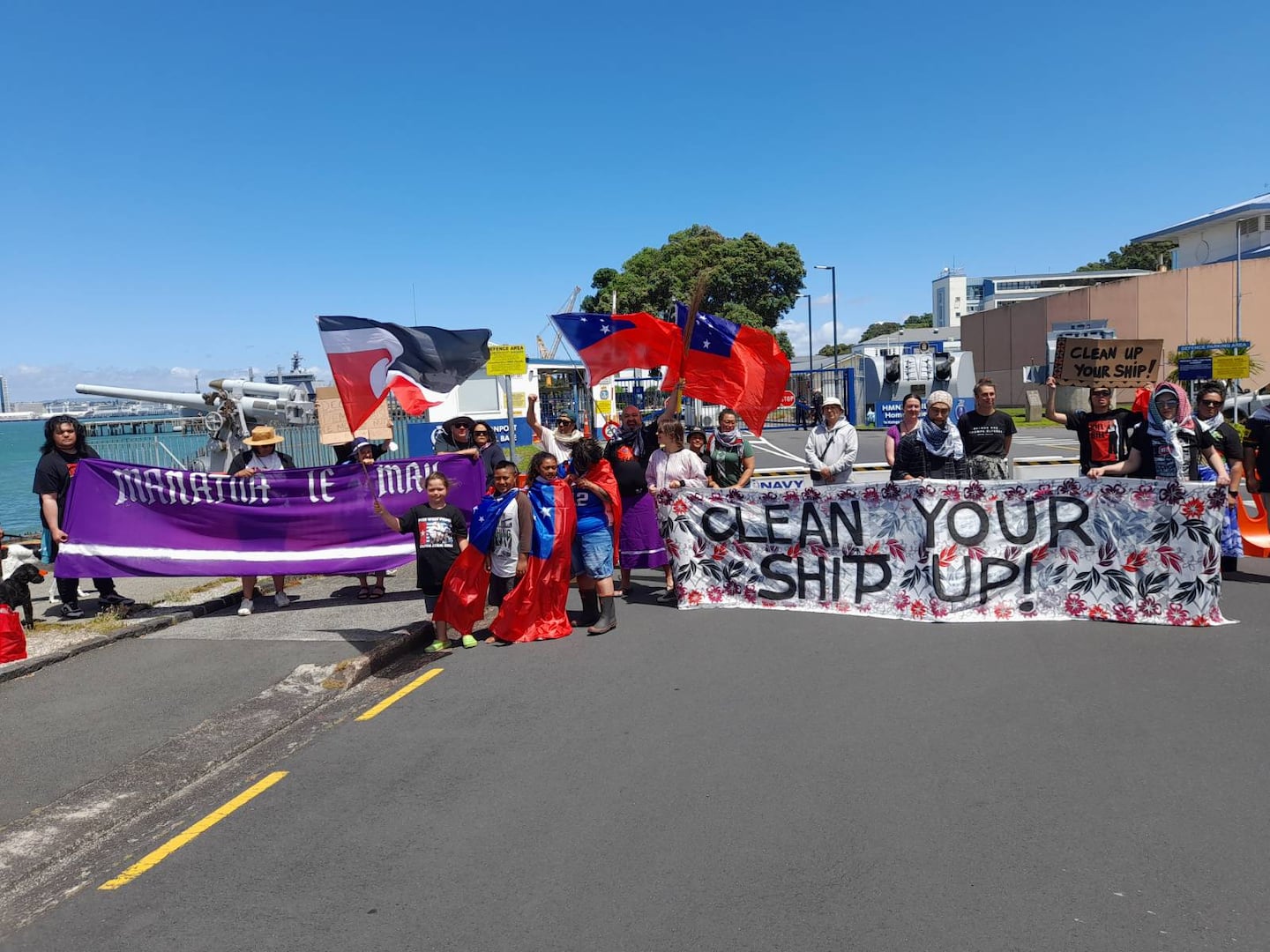Last Saturday was the 95th anniversary of Aso Pogisā or Black Saturday where 11 Sāmoans were killed by the New Zealand Military Police.
Te Ao Māori News spoke to artist Michel Mulipola, the mokopuna of Mata’utia Karauna Solomona, the Mau secretary and target of the police that day.
What is Black Saturday?
On 28 December 1929 in Apia, Sāmoa, a peaceful crowd paraded the streets to welcome to Mau members who were exiled in Aotearoa.
A sergeant from the NZ Police Military fired a machine gun to deter the crowd and three policemen fired at the crowd with rifles.
12 people died in total on Black Saturday - 11 Sāmoans including Mau leader Tupua Tamasese Lealofi III and a New Zealand police officer.
Lealofi’s last words were, “My blood has been spilt for Samoa. I am proud to give it. Do not dream of avenging it, as it was spilt in peace. If I die, peace must be maintained at any price.”

The day is known in history as Black Saturday and has been described as the worst incident in Aotearoa’s relationship with Sāmoa.
The protest on Saturday was organised by activist group Reanga Taketake. Along with others, they marched from Devonport Library to the Naval base.
They had a small rally with speakers Michel Mulipola, Nia-Val Tali and Tony Fala. Tali’s children who are Sāmoan sang a waiata about the Mau.
NZ colonisation and Sāmoan resistance
The Treaty of Berlin of 1899 was signed by the US, Germany and the British, and declared the country would be annexed.
Western Sāmoa became a German colony, while Eastern Sāmoa (now American Samoa) was under U.S. control
The Mau movement was a nonviolent campaign in the 20th century for Sāmoan independence that begun in 1908 under German rule.
When New Zealand began its occupation in 1914 the movement continued its anti-colonial resistance.
The 1918 influenza pandemic killed about 22 per cent of the Sāmoan population and the New Zealand administrations lack of response left many grievances.
Two years later the colonial administration appointed autocratic administrators from military backgrounds and didn’t care for the customs of Sāmoans who had no role in government.
After many years Sāmoa gained independence on January 1 1962.
Sunken ship polluted the waters of Sāmoa
Protestors drew connections between the military powers in the time of colonisation and the harm done in the sinking of HMNZS Manawanui in October.
Artist Michel Mulipola and great-grandson of Mau National Secretary, Karauna Mata’utia Solomona,was the lead organiser of the event.

He said there were a combination of reasons for the action - a commemoration for those who lost their lives on Aso Pogisā, the Mau movement and the historical acts of violence the New Zealand government has enacted against Sāmoans.
“[And] to highlight the responsibility this current government and Navy have for the environmental and societal impacts of the Manawanui shipwreck.”
In October Manawanui sunk into the coast of Upolu in Sāmoa, damaging the reef and polluting the waters with an estimate of 200,000 litres of diesel, impacting the lives of villagers in Tafitoala and Safata.
Protestors demand removal of Manawanui ship
Mulipola told Te Ao Māori News in October that removing the ship and pollutants was the least New Zealand could do.
“But it‘s typical right? The moana is seen as a dumping ground for the militaries,” he said.
“We‘ve seen it with the hundreds of nuclear bombs, with [Japan’s] nuclear waste.”
Two months after the ship sunk the NZDF began removing the pollutants but it hasn’t confirmed whether they will remove the entire ship.
The NZDF told Te Ao Māori News the New Zealand Government is working with the Sāmoan Government in considering the options for the future of HMNZS Manawanui.
“The safety and the protection of the environment remains a top priority to avoid as much as possible any impacts on Samoa’s marine and coastal environment, and the removal of the containers was an important first step,” Commodore Andrew Brown said.
No decisions have been made as the priority is for the removal of the fuel and other pollutants.



